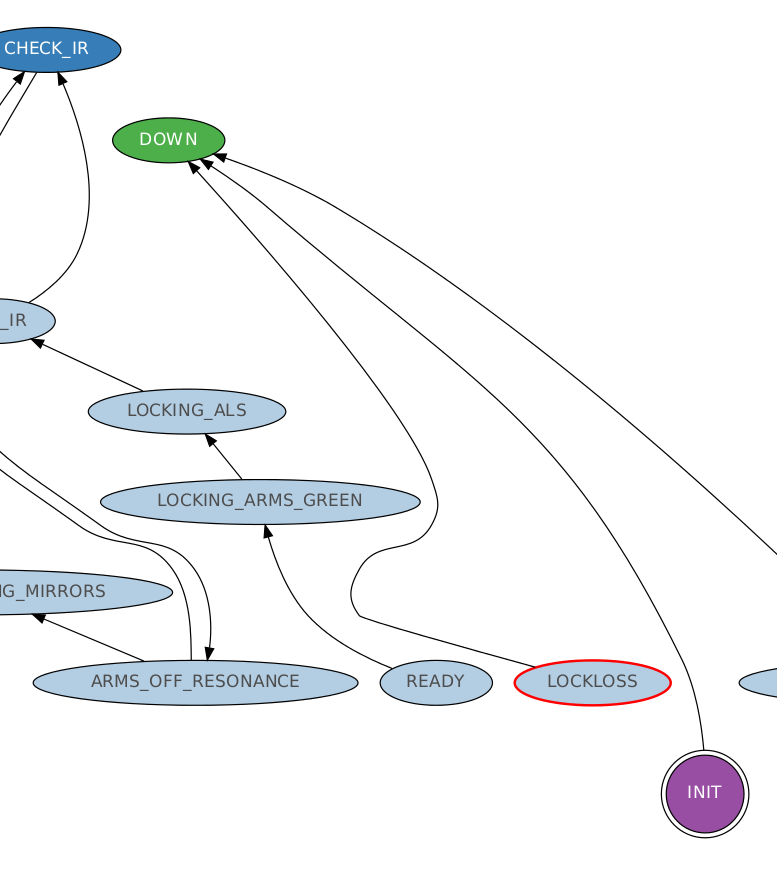Kiwamu, Stefan, Evan
We are trying to minimize the coupling of frequency and intensity noise into DARM by tuning the central heating on the IX CP.
The following excitations have been set up:
- Frequency excitation at 6409.7 Hz. 40 ct excitation into ALS-C_REFL_DC_BIAS (FM gain 1, all filters off). This goes into input 1A of the summing node board with a slider gain of 0 dB. We use LSC demodulator #1.1 to demodulate the signal in OMC DCPD sum.
- Intensity excitation at 2202.7 Hz. 40 ct excitation into PSL-ISS_TRANSFER1_INJ (FM gain 1, all filters off). This goes into the error point of the inner ISS loop. The outer ISS loop is off. We use LSC demodulator #2.1 to demodulate the signal in OMC DCPD sum.
- SRCL excitation at 748.7 Hz. 5000 ct excitation into SRM via LSC lockin oscillator #3. We use LSC demodulator #3.1 to demodulate the signal in OMC DCPD sum.
- Additionally, Stefan set up a broadband, analog frequency noise injection from 3 kHz to 30 kHz into input #2 of the common-mode board. This must be reverted in order to relock the interferometer.
The amplitudes were chosen so that each line has an SNR of 50 or so in OMC DCPD sum with a 10 s FFT. Each demodulator demodulates OMC DCPD sum at the appropriate frequency, and then lowpasses I and Q with a 100 mHz, 4th-order butterworth.
At 2015-08-03 01:19:45 Z we changed the IX CP heating power from 0.23 W to 0.36 W.
At 2015-08-03 02:57:25 Z we changed the IX CP heating power from 0.36 W to 0.53 W.
At 2015-08-03 04:26:20 Z we changed the IX CP heating power from 0.53 W to 0.41 W.
Additionally:
- At 2015-08-03 03:26:30 Z we turned off the broadband frequency noise injection.
- At 2015-08-03 03:45:50 Z we closed the outer loop of the ISS.
















Stefan has reverted the rewiring on the CARM board.
We are leaving the injected frequency line on so we can watch it as the interferometer settles into its new thermal state.